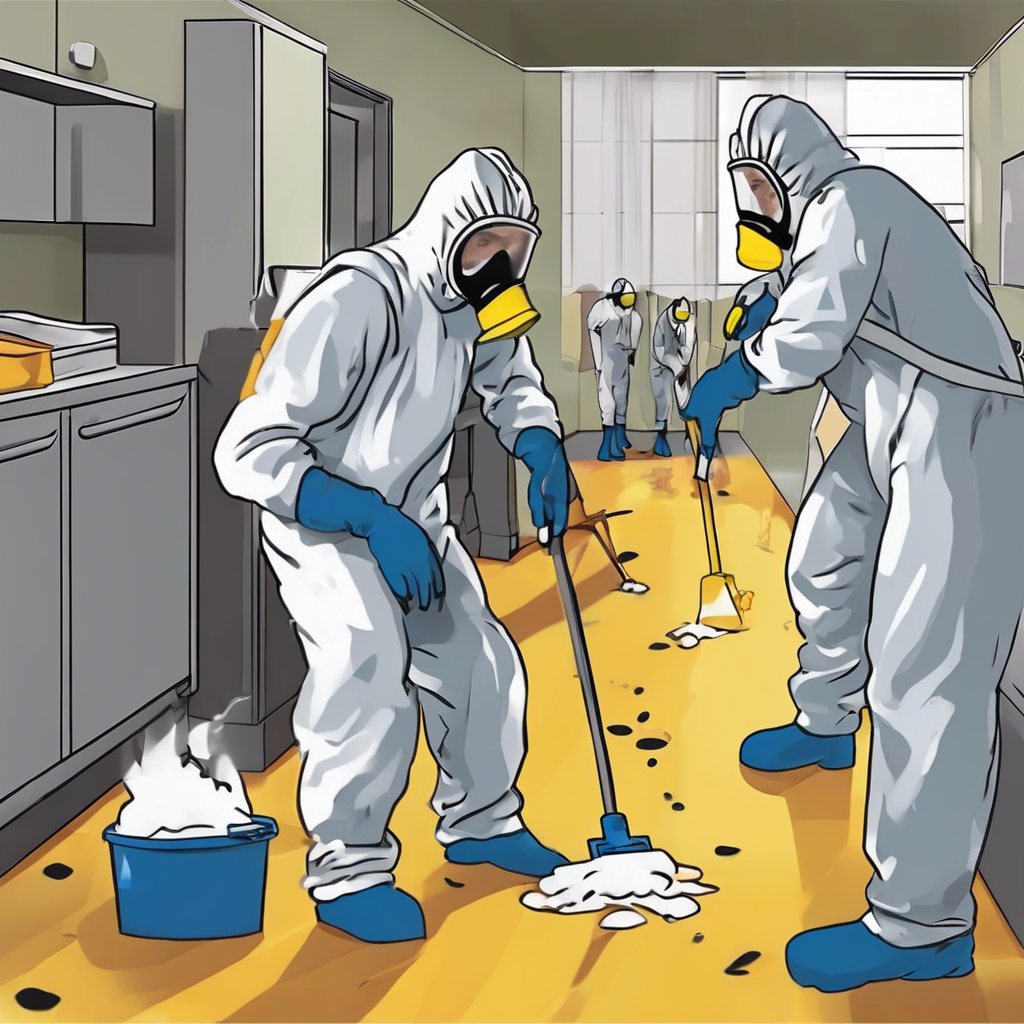How to Handle Biohazard Cleanup Safely: A Guide for the Prudent and the Slightly Squeamish
Let’s be honest, biohazard cleanup isn’t exactly a glamorous job. It’s less “sparkling clean” and more “sterile survival.” Yet, the need for professionals skilled in this area is undeniably real, a stark antithesis to our often sanitized worldview. Think of it like this: while we meticulously clean our countertops, unseen forces – from blood spills to infectious disease outbreaks – necessitate a different, more stringent approach.
My grandmother, bless her cotton socks, once told me that cleaning is an act of love. She was referring to dusting knick-knacks, not scrubbing up after a gruesome crime scene. But the underlying principle remains: attention to detail and respect for the task at hand are paramount. This, however, requires far more than elbow grease.
Understanding the Scope of the Threat
Biohazards aren’t just messy; they’re potentially dangerous. We’re not talking about a spilled glass of red wine here. Exposure to bodily fluids, infectious materials, or even certain hazardous waste can lead to serious illness or even death. The sheer range of potential threats – from bloodborne pathogens like HIV and Hepatitis B to the unpredictable nature of unknown substances – necessitates a cautious and highly trained response. It’s a field that demands both scientific precision and unwavering respect for the unseen.
Imagine a crime scene investigator’s meticulous work, the same level of careful attention to detail is required here. Only instead of clues, we’re looking for potential sources of infection. It’s a delicate dance between science and safety.
The Essential Protective Gear: Your Second Skin (and Then Some)
Before even thinking about touching anything, proper personal protective equipment (PPE) is non-negotiable. Think of it as your suit of armor against the invisible enemy. This isn’t a costume party; we’re talking about specialized gear designed to protect you from head to toe. We’re talking full-body suits, like something out of a sci-fi movie, only far less glamorous and more about safeguarding your health. This typically includes:
- Respirators: Essential for preventing inhalation of airborne pathogens or hazardous fumes. Think of them as a finely tuned filter system for your lungs.
- Gloves: Multiple layers of heavy-duty nitrile or other appropriate material; these are your first line of defense.
- Goggles/Face Shields: Protect your eyes from splashes and airborne contaminants.
- Boots: Waterproof and resistant to punctures, ensuring your feet are shielded as well.
- Protective Suits: These are not your everyday raincoats. They are impermeable barriers, designed to prevent contact with infectious materials.
Remember that PPE is only effective if used correctly. A single tear in a glove can be the difference between safety and serious risk. Think of it like this: a single weak link in a chain can cause the whole thing to break.
The Cleanup Process: Precision and Protocol
Biohazard cleanup is not a DIY project; it’s a highly specialized procedure. It’s less “a quick wipe-down” and more a choreographed ballet of safety and precision. Improper handling can not only spread contamination but also expose you to serious health hazards. The process typically involves several steps:
- Assessment and Containment: Carefully evaluate the scene, isolating the contaminated area to prevent further spread. This initial assessment is crucial – like mapping the terrain before battle.
- Decontamination: Utilizing specialized cleaning agents and procedures designed to neutralize biohazards. This isn’t just soap and water; we’re talking powerful chemicals designed to eliminate microscopic threats.
- Removal and Disposal: Proper disposal of contaminated materials according to local regulations is critical. This isn’t just throwing things in the trash; we’re talking about adhering to stringent guidelines to protect public health.
- Final Sanitization: A thorough final cleaning and disinfection to ensure the area is completely safe. This is the final flourish, ensuring the area is truly free from danger.
When to Call in the Professionals: Safety First
While some minor biohazard incidents might seem manageable, it’s crucial to remember that safety should always come first. If you’re unsure, or if the situation involves significant contamination, always contact a professional biohazard cleanup company. They have the expertise, equipment, and training to handle these situations safely and effectively. Trusting a professional is not a sign of weakness; it’s a demonstration of responsible behavior.
Think of it like this: would you attempt brain surgery on yourself? Probably not. Biohazard cleanup shares a similar level of complexity and potential risk. It demands specialized knowledge and training.
Beyond the Bleach: The Ethical Considerations
Biohazard cleanup is more than just a technical process; it’s deeply ethical. It’s about respecting the individuals affected by the incident, treating the scene with dignity, and ensuring the safety of the wider community. It’s a subtle irony that such a grim task demands such sensitivity. We’re cleaning up after tragedy, after suffering; respect and professionalism are non-negotiable.
The work itself is often emotionally challenging. There’s a quiet dignity in dealing with these situations with the utmost care and respect.
In conclusion, handling biohazard cleanup safely requires a combination of scientific knowledge, meticulous attention to detail, and a deep respect for human life and public health. It’s a demanding field, but one that is vital for protecting our communities. ☣️ Don’t hesitate to call a professional if you face a situation beyond your expertise – it’s not just a matter of cleanliness, it’s a matter of life and death.
